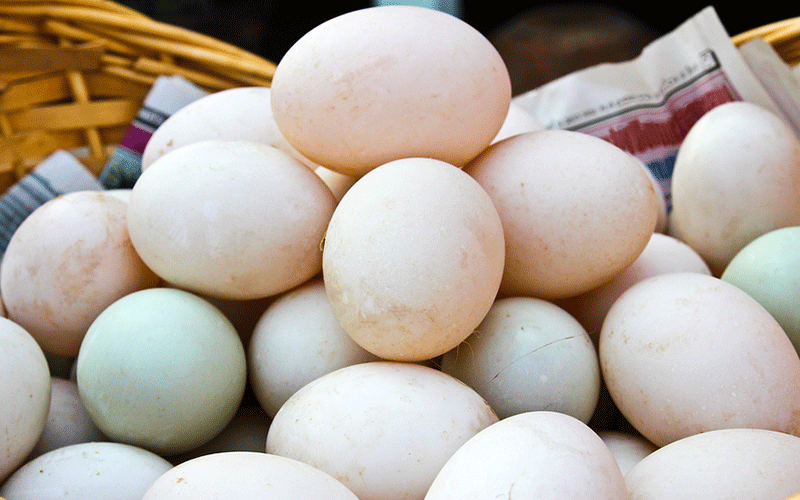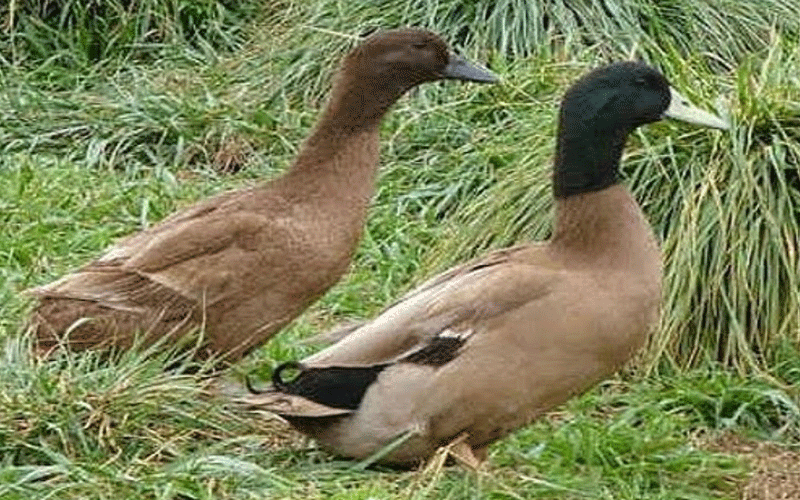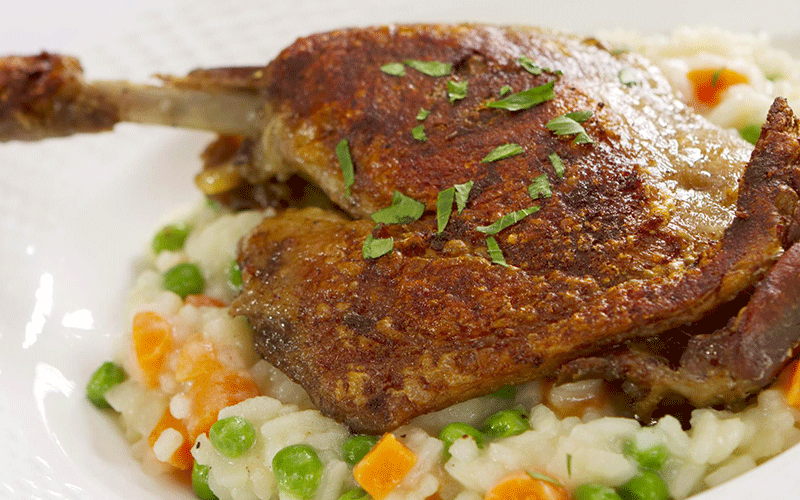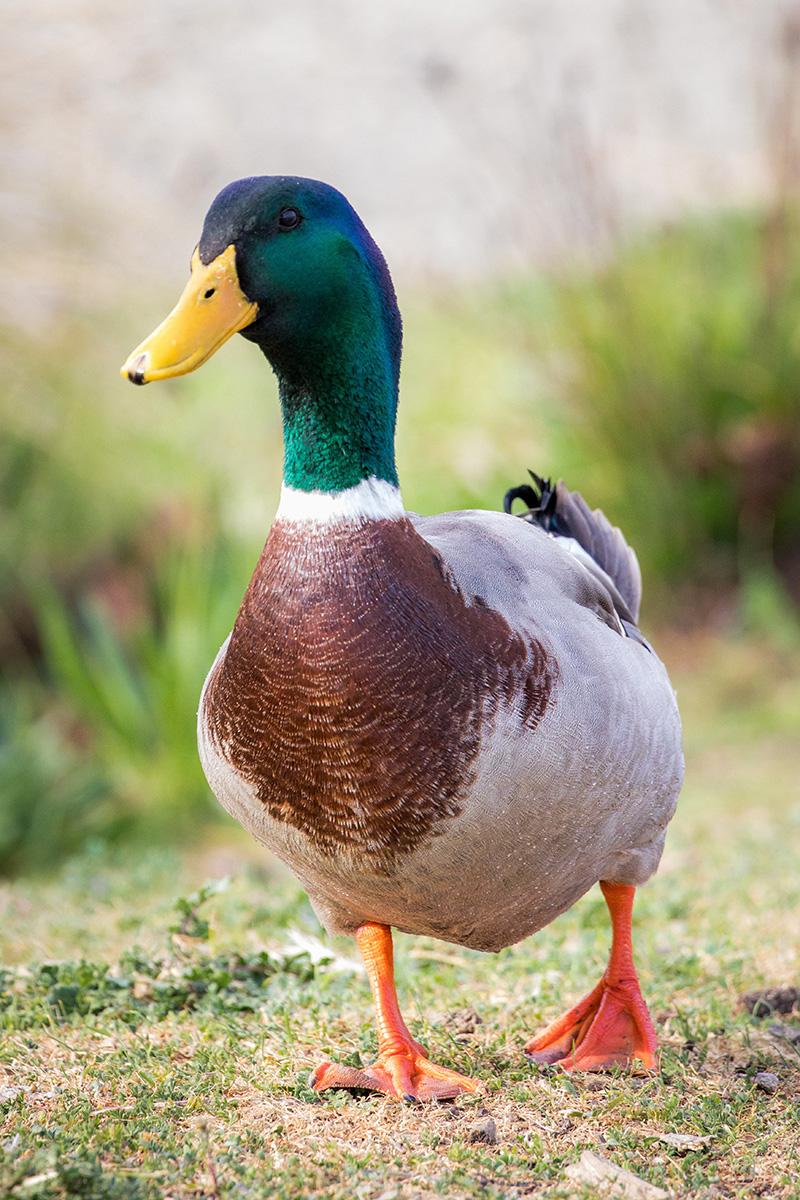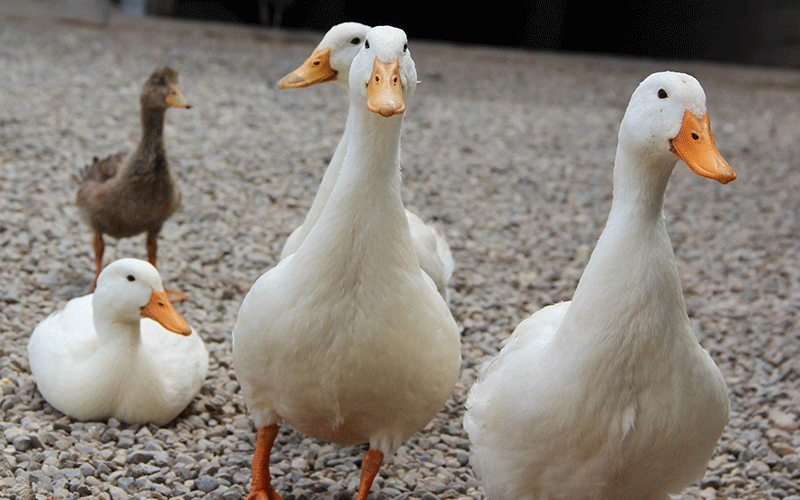A duckling is a baby duck. Ducklings usually learn to swim by following their mother to a body of water.
Adult backyard ducks can eat a wide variety of food, but your baby ducks should have a very specific diet from the time they hatch until they're fully feathered. Baby ducks eat duckling starter, vegetables, fruits, and protein like dried insects.
KHAKI CAMPBELL BREED
Campbells can come in three colour varieties: khaki, dark and white. They were developed by crossing between Mallard, Rouen and Runner ducks. The Khaki Campbell drake is mostly khaki-coloured with a darker head usually olive green lacking the white ring of its Mallard ancestors. The Khaki Campbell duck has a more modest plumage of Khaki covering the entirety of the body.
The egg production of the Campbell breed can exceed even the most efficient of egg-laying domestic chickens, with the breed laying an average of 300 eggs a year. When provided a moderate "duck conscious" environment to live in they will lay a more than modest number of eggs per week.
Campbells become mature at approximately 7 months. Campbell ducks seldom hatch out others' young; however, in very communal situations do hatch large broods together. Most brooding instinct has been selectively bred against in exchange for prolific egg laying ability in this breed. The ducks, when raised by hand, are not usually defensive of their eggs or nests, making collection of eggs very easy. Mechanical incubators or broody chickens are used to hatch out Campbell ducklings when ducks are not present in the process. Incubation takes approximately 23 to 28 days for a Campbell duckling to hatch and eggs need to be inspected for ducklings that have not emerged from their egg completely.
The Campbell is a British breed of domestic duck.It was developed at Uley, in Gloucestershire, England, at the turn of the 20th century; being introduced to the public in 1898 and the Khaki variety in 1901.
The Khaki Campbell ducks are robust, active and very strong birds. Despite popular misconceptions of skittish or flighty behavior, the Khaki Campbells are a very gentle, passive and friendly breed when raised by hand until maturity.
They have excellent laying and foraging ability. Ducks start laying eggs at their 5 to 7 months of age. And on average a duck lay about 300 eggs per year. But the ducks can lay more eggs when provided a moderate duck conscious and environment to live.
The eggs are white or tinted in color and are of superb texture and flavor. As a strong and energetic breed, the Khaki Campbell duck require plenty of space to graze and forage. They are proven to be amazingly adaptable and are usually good birds for families with young and children to use and care for.
These ducks can perform well in almost all types of climates. They are also very cold hardy.
INDIAN RUNNER BREED
Indian Runners are a breed of Anas platyrhynchos domesticus, the domestic duck. They stand erect like penguins and, rather than waddling, they run. The females usually lay about 300 to 350 eggs a year or more, depending whether they are from exhibition or utility strains. They were found on the Indonesian islands of Lombok, Java and Bali where they were 'walked' to market and sold as egg-layers or for meat. These ducks do not fly and only rarely form nests and incubate their own eggs. They run or walk, often dropping their eggs wherever they happen to be. Duck-breeders need to house their birds overnight or be vigilant in picking up the eggs to prevent them from being taken by other animals.
The ducks vary in weight between 1.4 and 2.3 kg. Their height (from crown to tail tip) ranges from 50 cm in small females to about 76 cm in the taller males. The erect carriage is a result of a pelvic girdle that is situated more towards the tail region of the bird compared to other breeds of domestic duck.This structural feature allows the birds to walk or "quickstep", rather than waddle, as seen with other duck breeds.Indian Runner ducks have a long, wedge-shaped head.The bill blends into the head smoothly being as straight as possible from bean to the back of the skull.The head is shallower than what is seen with most other breeds of duck. This effect gives a racy appearance, a breed trait.Eye placement is high on the head. Indian Runners have long, slender necks that smoothly transition into the body.The body is long, slim but round in appearance.The eggs are often greenish-white in color. Indian Runners have tight feathering. Drakes have a small curl on the tip of their tails, while hens have flat tails. It's difficult to determine their sex until they are fully mature.
They often swim in ponds and streams, but they are likely to be preoccupied foraging in grassy meadows for worms, slugs, even catching flies. They appreciate open spaces but are happy in gardens from which they cannot fly and where they make much less noise than call ducks. Only females quack and drakes are limited to a hoarse whisper. Compared to big table ducks, they eat less grain and pellet supplements.
